Why talk about red dots?
The NUMBER ONE thing we get questions about from new shooters (besides the basics of shooting) is RED DOTS. They are quickly becoming the norm but SO MUCH is still unknown about them to new shooters & even many experienced ones.
So we decided to make CFI’s beginners guide to red dots. Everything we wish we knew way back when we got started learning about what is fast becoming the standard sighting system for many serious pistol users.
*Note: If you are a very experienced red dot user and you’re looking for an incredibly intricate and high level look at the nuances of different SMO systems, this will likely not be the article for you, this is for the guy or gal who wants all the basic info they need to get started on their red dot journey with enough information to know what they’re doing, reading, and shooting.
What IS a red dot?
The dictionary definition of a red dot sight is: a non-magnified “reflex” style sighting system that provides an illuminated red dot for the shooter to use as a point of aim.
Basically, it is a housing that you put on top of your gun with a window in it that you look through at your target. In that window, there is a red dot that tells you where your shot will hit on the target.** You no longer line up 3 iron sights, you just aim that little red dot where you want to hit and press the trigger.
Red dots can be mounted to just about any firearm type out there: Pistol, Rifle, Shotgun, etc. Though you’ll find it’s tricky to get them onto a revolver without some gunsmithing work and some fancy attachment accessories (more on putting them on your gun later.) For our purposes we’re going to be talking about red dots as they relate to handguns, mainly semi-automatics.
Red dots, being un-magnified (it doesn’t zoom in on the target at all) are most effectively used at ranges of 100 yards or less, but can be used to decent effect a good bit further depending on the type of gun they’re on and the skill of the shooter.
Only you can see this red dot, as it is projected onto the glass of the window you’re looking through, not downrange at your target.
**The red dot, much like a scope on a rifle. Isn’t automatically “zeroed in” right out of the box. You need to zero your red dot just like you would any other sighting system before it can be used effectively. More on this later.
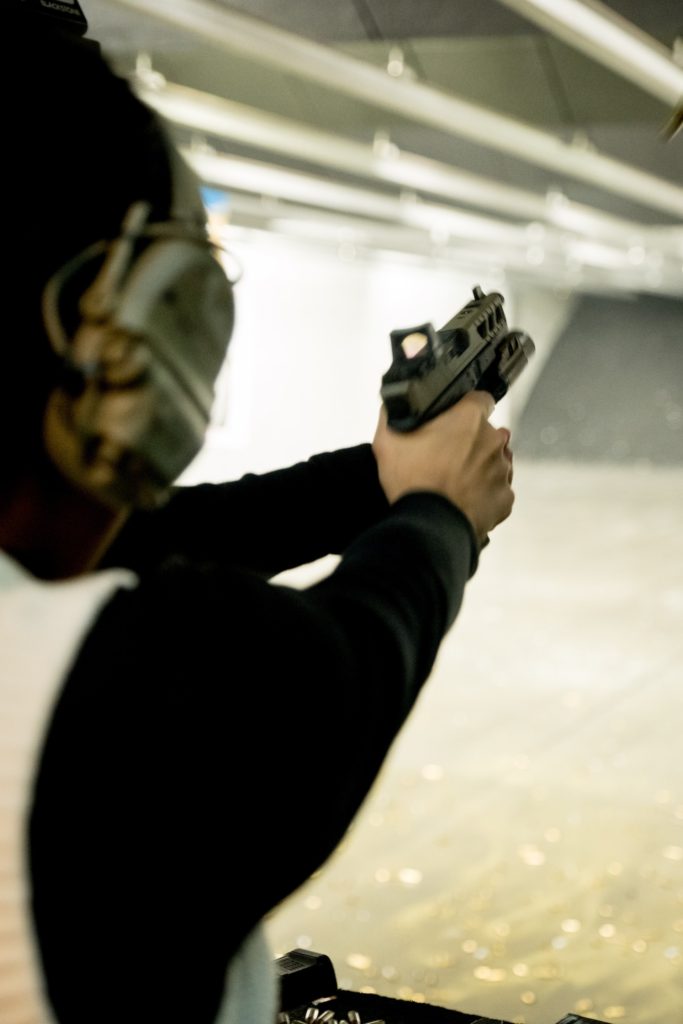
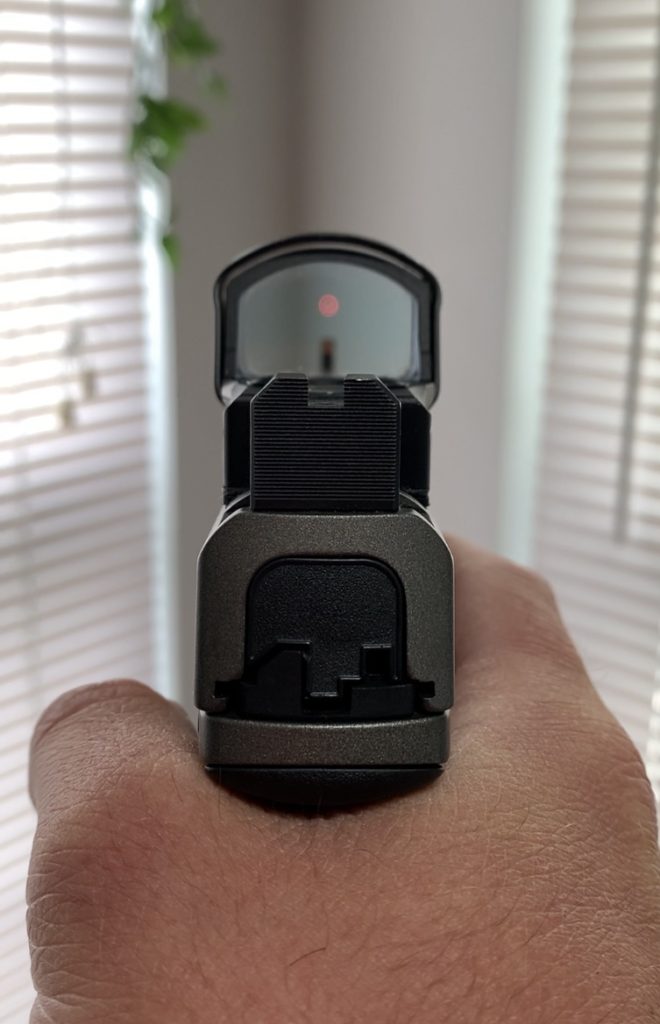
Why have a red dot?
Why the heck are these things becoming so popular? What’s the big deal that’s making military, law enforcement, competitors and lots of everyday citizens add red dots to their pistols?
I can best sum it up in 3 points, each one of which in some way helps to cause the others. Keep in mind this is not me pitching to have everyone switch to red dots, just going over the main benefits of using one:
- EASE – They’re just dang easy to use. No more worrying about lining up 3 sights evenly. No pulling focus from the target back to the front sight. No having to close an eye to see the sights properly. The list goes on but at the end of the day, resting a dot on the middle of your target is undeniably easier than focusing on the alignment of 3 sights. Particularly if your vision “isn’t what it used to be” or you’re shooting out past 10 yards or so.
- TARGET/THREAT FOCUS – Red dots are designed to be used while you focus on THE TARGET, not the sights. Unlike their iron sight brothers, the red dot not only doesn’t need you to focus on it to shoot, but it works best when you don’t. You should look through it and focus on the target. This is a much more natural state for many shooters particularly those who are training for self defense. It doesn’t matter how many reps you have down at the local range, if a 250 lb bad guy is barreling down on you, you won’t be focusing on any front sight, you’re focused on the threat. Red dots are designed to work with that natural state of things, not against it.
- SPEED/ACCURACY – And finally, a bi product of all of this ease of use and proper focus is that, with a small amount of practice a shooter will find they can be much faster & often times more accurate with a red dot. For some, the accuracy benefits don’t start to show themselves until the target is a bit further away, but it always shows up eventually, particularly when you’re trying to shoot fast.

How do red dots work?
I’m going to go broad and big picture with this one. Let’s talk about how “the whole red dot thing works” and not “what is the science behind the lenses and mirrors that comprise a red dot sight” sound fair? Awesome.
Red dot sights are made by a huge host of companies and the list is growing every day as the technology becomes more and more commonplace. You’ll often hear red dots mistakenly called “RMRs”. This is like people calling all internet searches “googling” or all carbine rifles “ar-15”. The Trijicon (company name) RMR (model name) was an early leader and remains one to this day in the space of red dot sights and became almost interchangeable with the term “red-dot” for a while. Since there are so many companies making such a wide variety of red dots, it’s important to nip this nagging error in the bud early.
Here’s a list of some of the big name companies making red-dots. This list is not exhaustive:
- Trijicon
- Leupold
- Holosun
- C&H
- Steiner
- Sig Sauer
- Vortex
- AimPoint
- Shield
Red Dot Footprints (sizes, shapes, & configurations)
Remember, each red dot model may have a different “footprint.” Optics Trade has a great article doing a DEEP dive into what footprints are and the various specs of footprints for different red dot models here: Footprint Article. We won’t be going that far down the rabbit hole here.
Suffice it to say, a red dot’s “footprint” is a term for its:
- Size
- Shape
- Screw Placement
- Pattern of bumps on the bottom designed to fit intro reciprocal cutouts on the gun to ensure a snug fit.
A red dot’s footprint is used to determine what guns it might fit onto, and if it won’t fit directly onto the gun, what simple “mounting plates” you might need to buy to ensure a snug fit.

Can I get a red dot on my gun?
TECHNICALLY, yes.
Practically speaking, not all guns can have a red dot attached to them.
IF you had an unlimited amount of dollar-dollar-bills and no requirement for the gun to be reliably functional or carry-able, technically you can find a way to rig a red dot sight onto most any pistol. For practical purposes let’s talk about optics cuts & slide milling.
For a red dot to be functional it needs to be bolted down SOLID onto the gun. Imagine the crazy beating that thing will take sitting on top of your slide while you shoot! Not exactly a job for you to McGiver together with some duct tape.
Basically, the slide of your pistol needs to be milled (or cut) out and have threaded holes added to accept a red dot. This is called an optics cut. The red dot will then sit snugly in this cut out and be screwed into the slide to keep it from moving while you shoot. Certain footprints (sizes and shapes of red dots, see above) will require you to have a mounting plate that marries up to it to make sure your red dot has a snug and secure fit.
More and more, gun manufacturers are making their newest models “optics ready” from the factory (they will already have an optics cut) but not all of them. Your gun may already have an optics cut, look for a cutout with some screws on the top of your slide back towards your rear sights (photo examples below) to see if yours has one or not.

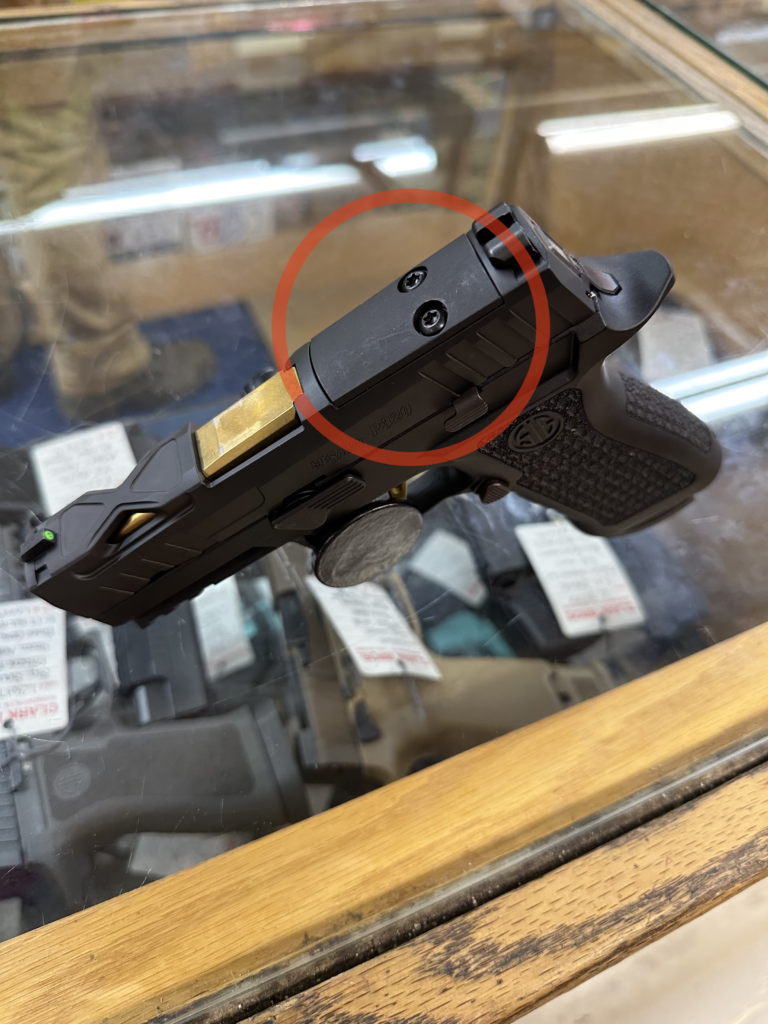
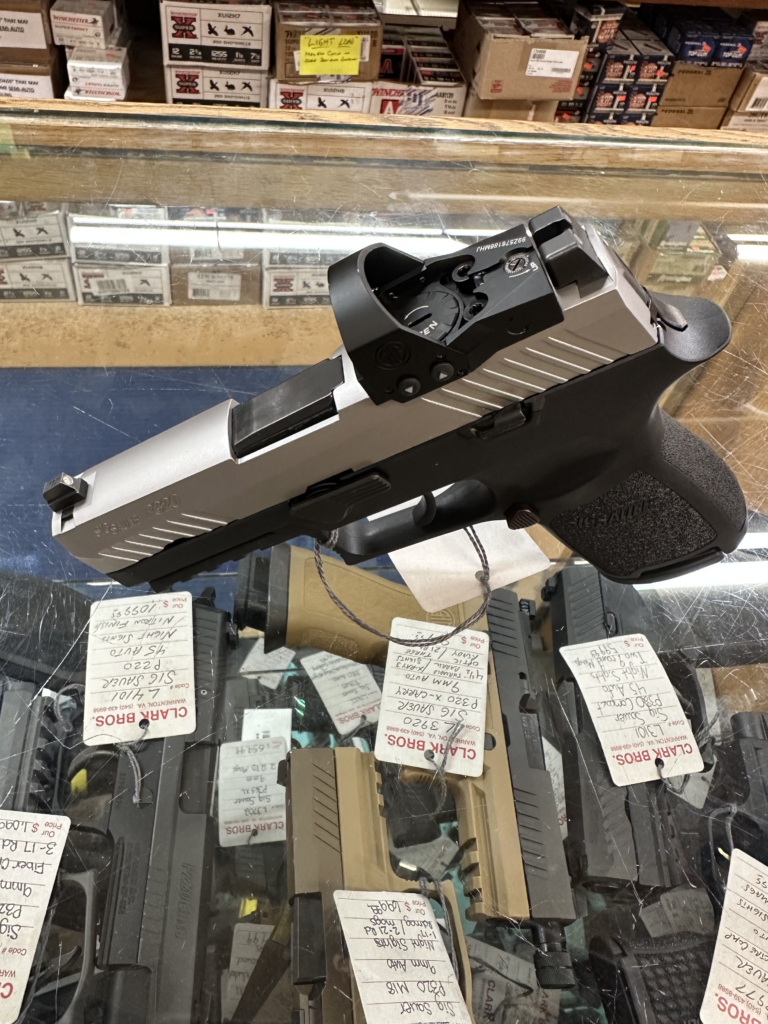
What if my gun isn’t cut for an optic/red dot? – Though it’s typically not the option I recommend, you can have your gun sent to a company that offers “Slide Milling” services. You ship them your slide and they will mill (cut) out an optics cut for you onto your slide. If you’re in love with your particular gun AND the idea of having a red dot, then this might be the way to go for you, but I often don’t recommend it for 3 reasons:
- You lose your gun for the weeks if not months you have it shipped away.
- Often times the services cost almost 1/3 the price of a brand new gun, especially when you factor in shipping costs.
- You have to be pretty particular about what you order as certain companies will only service certain types of pistols or cut for certain optics. It’s easy for a beginner to make a costly mistake.
- **Quick note: If you’re experienced, know your stuff, are familiar with the red dot space and have a bunch of guns and just want a red dot on one, I’m not trying to dissuade you from getting an optics cut. There are companies that do great work out there.
So short answer: Maybe. If your gun can’t already accept a red dot and you find yourself really wanting one on it, you could always ship it out to get cut for the optic, or the option I like better (which puts you out of pocket about the same amount.)
Trade in your current firearm and buy a model with an optics cut already on it.
I have a gun that can take a red dot! Now what?
Good for you, your grandpa may think you’re an embarrassment for not “being able to shoot iron sights” but you’re going to have fun with it.
First, check what red dots your gun can accept! Your optics cut will fall into 1 of 2 categories:
- A footprint-specific optics cut. Some gun companies cut slides specifically to fit their own optics only.
- (More Common) A General optics cut. A general optics cut may be cut in such a way that 1 specific footprint will fit perfectly in there right out of the factory, but you as the user can add “mounting plates” that will allow you to add most any red dot you’d like.
If you’re buying the gun new, many will come with a range of “mounting plates” right there in the box for you. Simply check the owner’s manual to see which plate you need to use to attach the red dot you like and bam! You’re good to go.
If you bought your gun used or it just doesn’t come with any mounting plates, simply type the following search into your favorite search engine:
“___Your gun model name__ + optics plate for + __your desired red dot model__”
This search should bring you right to a place to purchase the proper plates. So for example I might want to find the plates to attach my Leupold DeltaPoint Pro red dot to my Sig Sauer 320. I would type:
“Sig Sauer 320 optics plates for Leupold Delta Point Pro” and I would get a result like this:
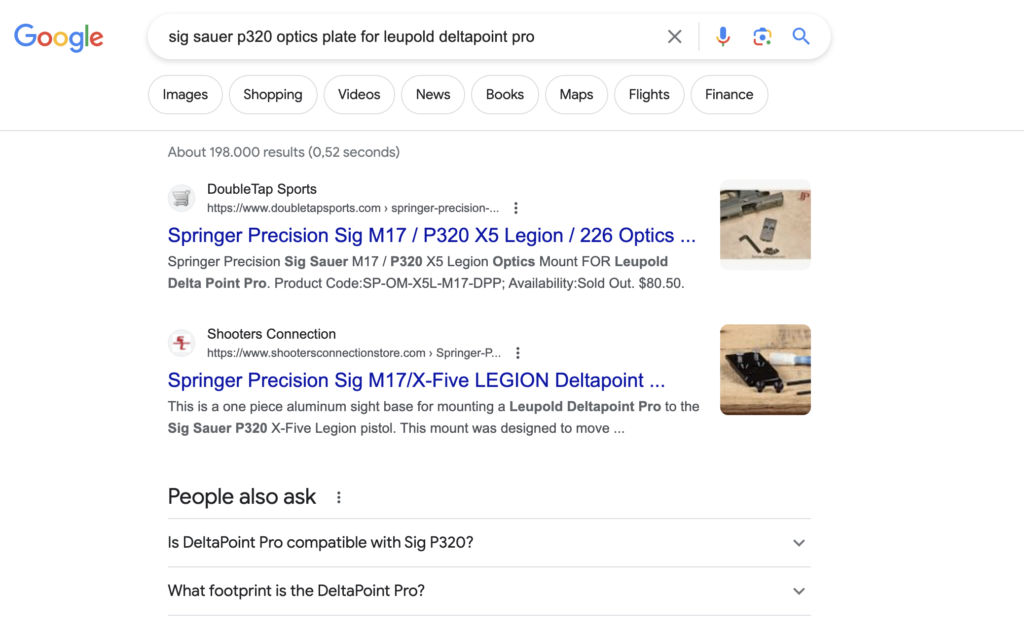
After I click on the first link, I get a page that looks like this:

Notice how multiple times on the page it confirms both the guns the plate WILL fit and the guns that it won’t fit along with the red dot it’s designed for.
Don't forget those Iron Sights
Don’t forget to check whether or not you can attach a red dot and still keep your iron sights.
Some guns like earlier model Sig Sauer 365s and Caniks require you to REMOVE your rear iron sights in order to attach a red dot. Why would they do that? You might ask. I have no freaking clue, I answer.
If you’re only going to use this gun for range fun and competition, go for it. If this is a firearm that will serve for home defense or daily carry, I would NOT recommend adding a red dot if it means having to remove your iron sights. As much as I LOVE red dots, and boy do I, they are electronic and they can fail. Not often, not frequently, not even hardly ever, particularly when it comes to well made higher end brands. But they CAN FAIL. I have had it happen to me 3 times in my time shooting.
Batteries die, connections get disrupted, mounting screws back out, the dang thing just “craps out.” Guess what doesn’t run out of battery or care whether it gets wet? Iron Sights.
So my recommendation for any firearm you plan to have ready for defensive use is to make sure you can keep your iron sights as backups even when mounting a red dot.
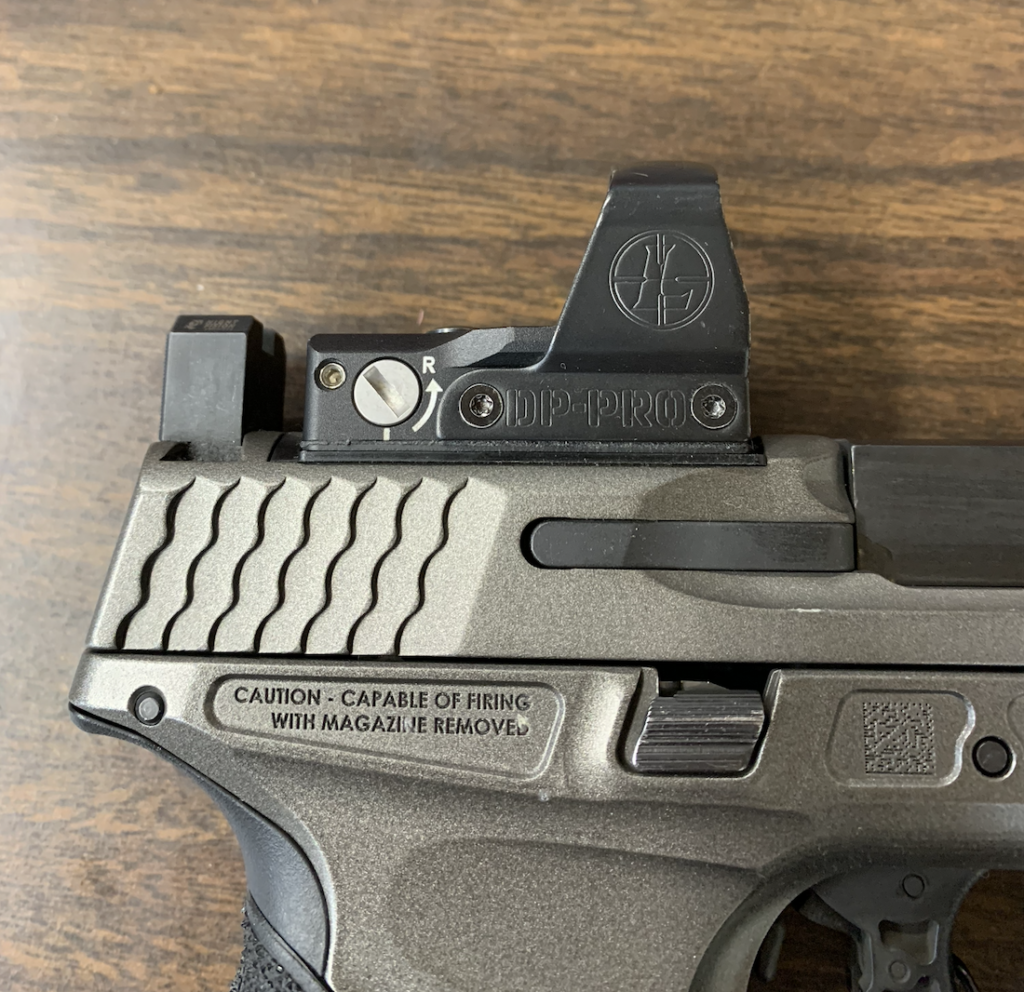
How Do I Pick the Right Red-Dot?
Much like “how do I pick the best rock song?” or “Which gun is the best for me?” this question isn’t as easy as 1..2..3.
BUT!
I can give you some guidance to get you started. There are 3 main things I look for when choosing a red dot.
- Reliability – Almost always number 1 on my lists. Save up and go with a company that has a history of reliable use. In my experience (this is purely anecdotal) companies like: Trijicon, Leupold, Sig Sauer**, Shield, and Holosun (surprisingly enough given their price point) have all proven to be manufacturers that put out reliable products. There are many more, those are just the ones I have the most experience with personally. **I have had many issues with the Sig Sauer “Romeo Zero” red dot platform but have nothing but good things to say about their other models.
- Size – Companies generally make “Standard” size red dots and then “micro red dots.” There is some interchangeability here. Some big guns can run** smaller dots and vice versa. Generally speaking, however, this question will be answered by the type of gun you have. If you have a compact or full sized gun like a Glock 19 or Smith and Wesson M&P 2.0 you will go with a standard size red dot like the Trijicon RMR, Leupold Delta Point Pro, Holosun EPS, Sig Sauer Romeo Pro. If you have a subcompact carry style pistol like a Springfield Hellcat, Glock 43x, SIg Sauer p365, etc. You would go with a micro red dot platform like the Holosun 507c, Trijicon RMRcc, Sig Sauer Romeo Zero Elite, Shield RMSC, Swampfox Sentinel, etc. Basically, look at your slide. If you have a single stack pistol with a skinny slide, you’re likely going to use a micro red dot. If you have a double stack with a thicker slide, you’ll likely be looking at the standard options.
- Dot Size – The size of the dot in the window is measured in MOA. Essentially, if you look at that dot on a 100 yard target, how many inches would it cover? The most common range of sizes is from 2-6 MOA. There’s A LOT of debate here but at the end of the day it’s not going to make a HUGE difference. I personally like to go for a smaller dot as it obscures even less of my vision through the window. Some people report the larger dot being easier to find quickly.
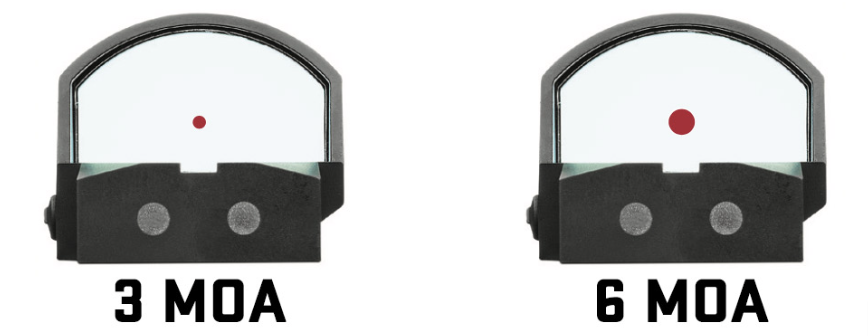
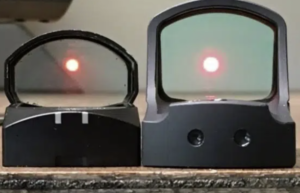
Can I DIY my red dot install?
If you’ve come this far, you bet! Once you’ve done the hard work of finding out what red dot you want, making sure it will work with your gun, and buying any applicable mounting hardware, the rest is pretty easy.
There’s nothing wrong with dropping it off to your local gunsmith and having them mount it for you. Many will even Zero it for you as well.
If you want to do it for yourself, you simply:
- Remove the cover on your optic plate
- Put on your mounting plate (if applicable)
- Insert the battery (if your red dot battery compartment is on the bottom of the housing as many are.)
- Set the red dot down & tighten the screws into place
- Zero your red dot (We’ll be doing a deep dive article and video on how to Zero your red dot coming soon.)
Conclusion
That’s our beginner’s guide to red dots. While the world of red dots might seem daunting at first, it’s just like buying a scope for your rifle! Don’t forget to use your resources and reach out to us here any time for help and make use of your local gun shop. They’re there to help.
DON’T FORGET TO CHECK OUT OUR VIDEO BREAKING ALL THIS DOWN FOR YOU VISUAL / AUDIO LEARNERS.
Don’t forget to bring your new red dots out for your Concealed Carry or Holster 101 class scheduling now!

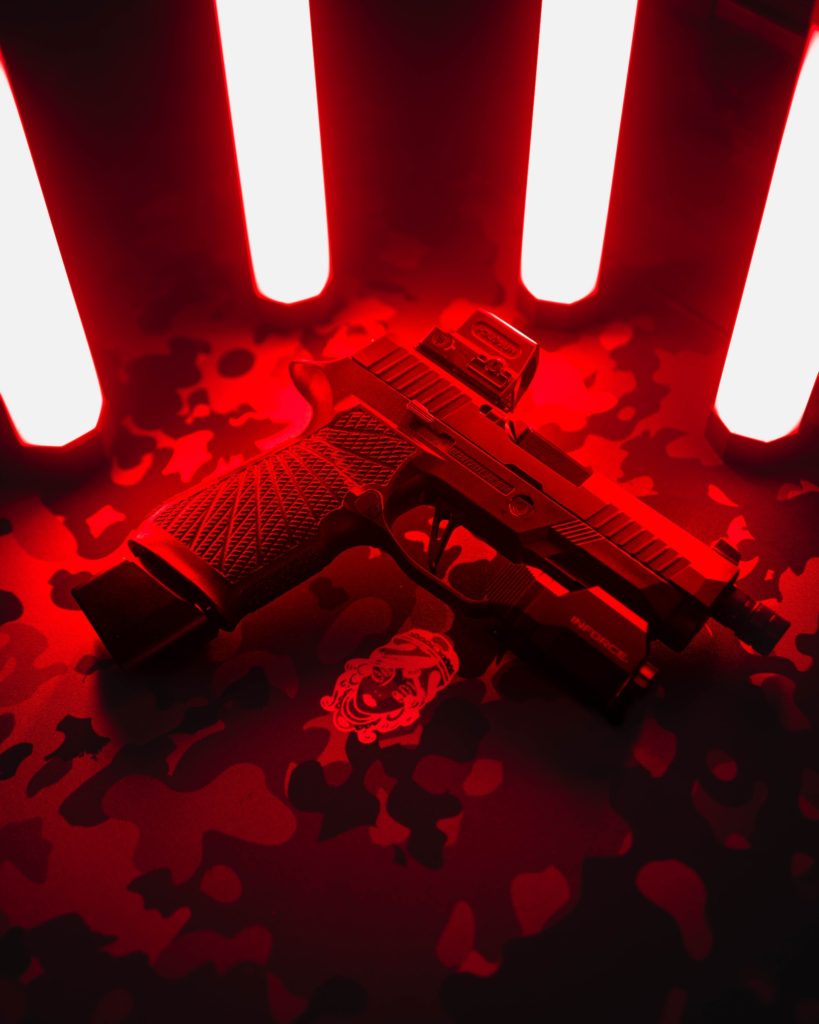
Great article as always. Thanks.